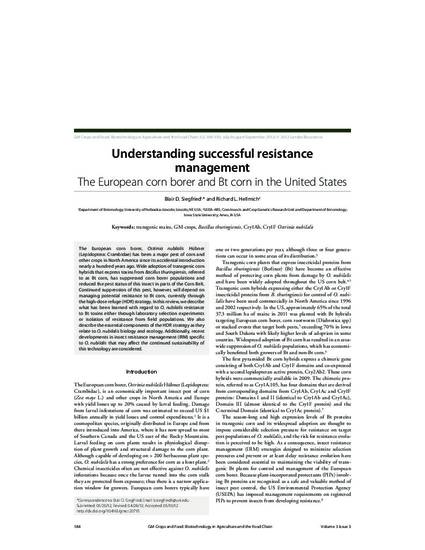
The European corn borer, Ostrinia nubilalis Hübner (Lepidoptera: Crambidae) has been a major pest of corn and other crops in North America since its accidental introduction nearly a hundred years ago. Wide adoption of transgenic corn hybrids that express toxins from Bacillus thuringiensis, referred to as Bt corn, has suppressed corn borer populations and reduced the pest status of this insect in parts of the Corn Belt. Continued suppression of this pest, however, will depend on managing potential resistance to Bt corn, currently through the high-dose refuge (HDR) strategy. In this review, we describe what has been learned with regard to O. nubilalis resistance to Bt toxins either through laboratory selection experiments or isolation of resistance from field populations. We also describe the essential components of the HDR strategy as they relate to O. nubilalis biology and ecology. Additionally, recent developments in insect resistance management (IRM) specific to O. nubilalis that may affect the continued sustainability of this technology are considered.
Available at: http://works.bepress.com/richard_hellmich/70/

This article is from GM Crops & Food (2012): 184–193, doi:10.4161/gmcr.20715.